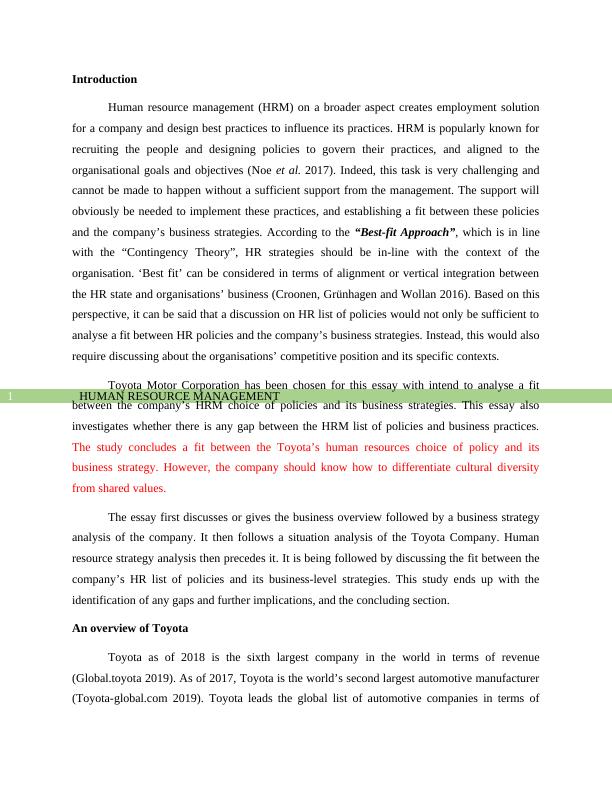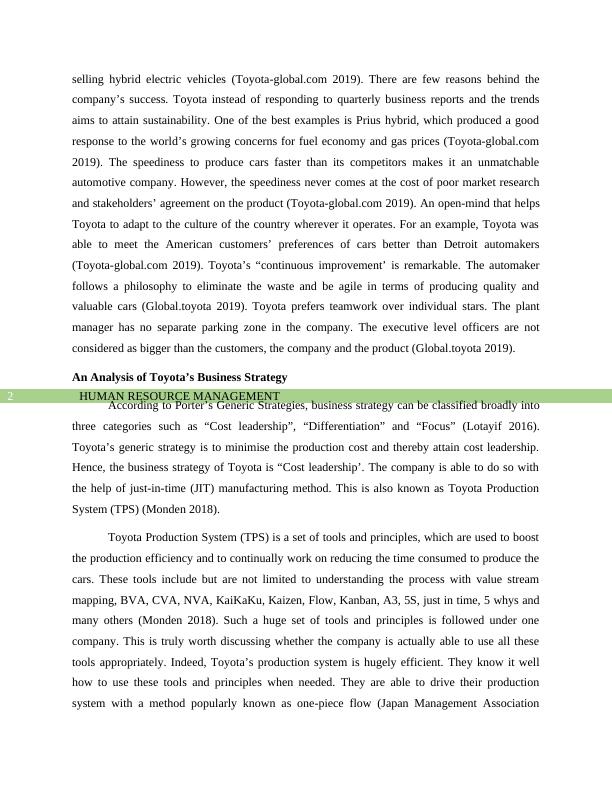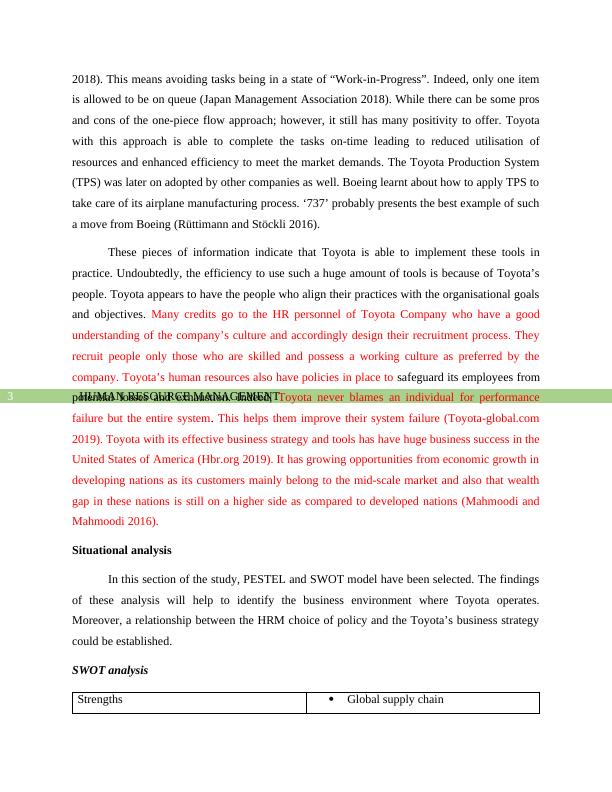Fit between Human Resource Policies and Business Strategies of Toyota
Scholarly reading is relevant to scholarly writing as it provides the necessary information, quality of claims, and presentation techniques. The assignment requires following the good assignment style and providing a succinct and concise business strategy section.
15 Pages4913 Words83 Views
Added on 2023-01-11
About This Document
This essay analyzes the fit between Toyota's HR policies and business strategies, discussing the company's competitive position and specific contexts.
Fit between Human Resource Policies and Business Strategies of Toyota
Scholarly reading is relevant to scholarly writing as it provides the necessary information, quality of claims, and presentation techniques. The assignment requires following the good assignment style and providing a succinct and concise business strategy section.
Added on 2023-01-11
ShareRelated Documents
End of preview
Want to access all the pages? Upload your documents or become a member.
Human Resource Issues Faced by Toyota
|12
|3413
|3336
Best Fit and Best Practice in Strategic Human Resource Management: A Case Study of Coles Supermarket in Australia
|13
|3724
|102
Strategic Human Resource Management - Analysis of HRM Practices
|13
|3184
|214
Human Resource Management: Purpose and Scope
|10
|858
|132
Managing Human Resources in an Organisation
|11
|2711
|239
Importance of Employee Relations in HRM Decision Making
|17
|4228
|64




